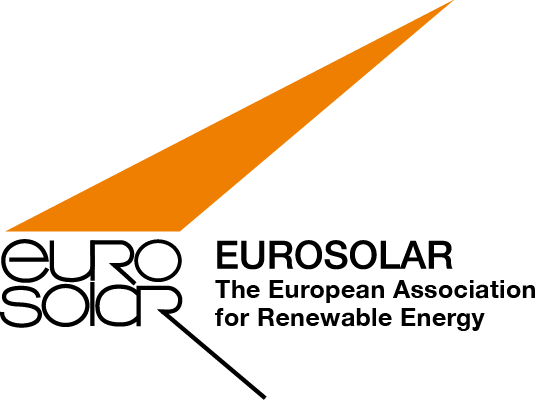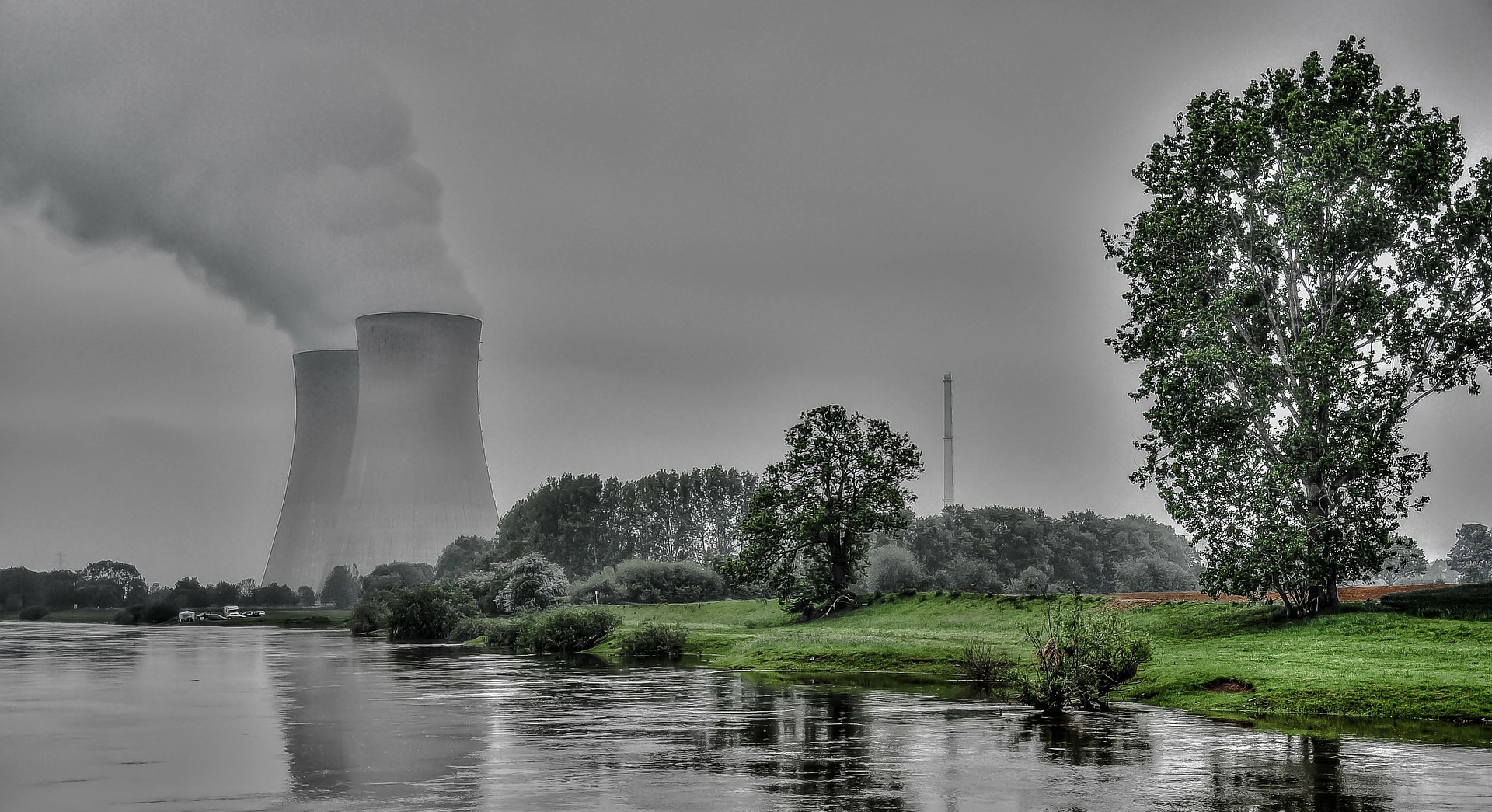The real Green Deal demands clear exit paths from all fossil fuels and nuclear power
EUROSOLAR rejects any nuclear and natural gas elements in the EU Taxonomy for environmentally sustainable activities. Should these technologies be accepted as sustainable investments in the EU Taxonomy, they would be eligible for very favorable financing terms. This would be yet another massive obstacle in the efforts to bring about a transition to renewable energies and lessen the likelihood of the catastrophic consequences of abrupt global heating, in Europe and around the globe.
Including either lethal energy system would substantially harm all of the six environmental objectives[1] the Taxonomy Regulation is meant to uphold:
- They further contribute to climate change through life-cycle emissions and opportunity costs
- they make climate change adaptation infinitely more difficult by creating rigid systems prone to failure in extreme weather events
- they do great harm to water and marine resources through heating and pollution
- they obstruct the transition to a circular economy in creating unsolvable linear waste streams
- they are both leading polluters
- they are proven contributors to biodiversity and ecosystem damage and collapse in mining, processing, construction and waste production.
Further investments in natural gas-fired power plants pose an existential threat in that they are incompatible with the goals to rapidly lower carbon emissions as set out in the Paris Agreement – let alone pursuing the essential negative emissions towards stable GHG concentration levels[2]. Nuclear energy is neither carbon-emission free when considering its life-cycle costs, nor does it meet any criteria of sustainable investment due to the massive costs, unsolvable issues of nuclear waste, nuclear proliferation, the severity of nuclear accidents and the risk of plant failure in higher temperatures to come.
Allowing new investments in gas and nuclear with favorable green financing is a massive step backwards, and shows a lack of vision by the European Commission. It reveals disingenuity when propagating sustainable development and undermines the very Green Deal whom the Taxonomy is meant to support.
Instead, EUROSOLAR presents a vision in which the European Union and European countries take the renewable, climate-stabilizing path of a ‘Regenerative Decade'[3]: This is the most urgent goal for Europe in 2022. In its pursuit EUROSOLAR urges clear exit paths from all fossil fuels and nuclear power as paramount both EU policy and national practice, and the pursuit of the Regenerative Decade, www.earthdecade.org.
Uranium and methane are two of the deadliest elements of all when it comes to energy technology applications. Instead of even considering the continued use of these dangerous resources, governments should immediately and collectively plan how to halt the looming methane and uranium disasters. This must be the focus of all diplomatic and joint efforts from now on – against this, all military and territorial disputes pale: the common existential threat can only be overcome if it is recognized as such, and fought in mutually supportive mobilization.
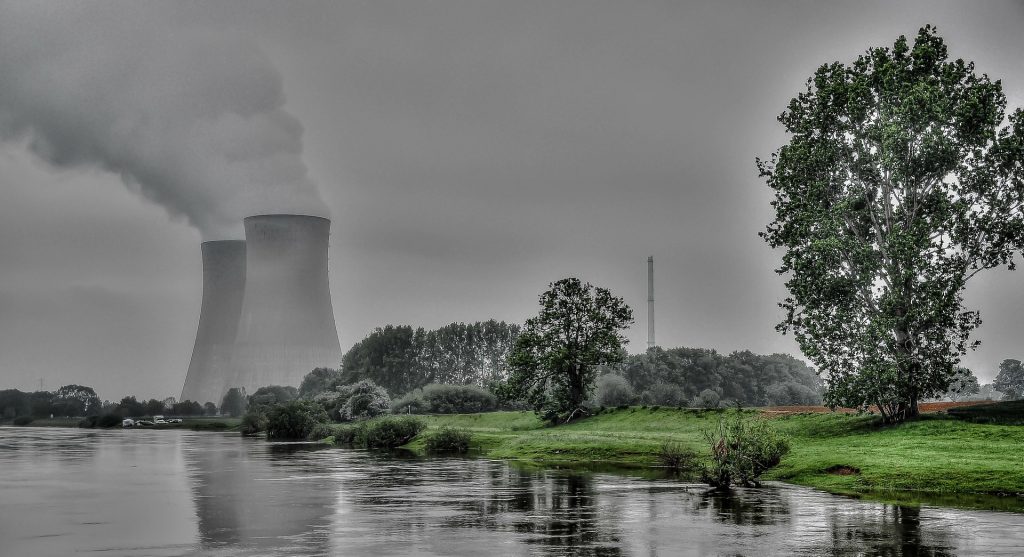
1. The existential danger of natural gas
Atmospheric methane concentrations today are already three to four times higher than their climate-stable level – between 1800 and 2400 atmospheric parts per billion (ppb)- while for over half a million years the recorded level peaked at 600 ppb.
2000 parts per billion of CH4: that equates to 172 parts per million of CO2, assuming that methane is 86 times mote effective a climate gas than CO2 over a decay period of 20 years (56 ppm over 100 years). CO2 concentrations have already skyrocketed to 420 parts per million today – so together that’s already 592 ppm CO2-e (equivalent) without even including other climate gases.
And both CH4 and CO2 concentrations are increasing exponentially, largely because so little is being done about it. From Brussels to Washington to Moscow, Beijing, Jakarta and Canberra, fossil fuels including methane continue to be promoted and prioritized. About 40% of the atmospheric methane surplus is due to fossil industrial sources: Natural gas and oil production. Other portions come from agriculture and other sources.
But the rest is released more and more from arctic sources: from microbes in thawing permafrost, from methane ice (hydrate or clathrate) collapsing due to warming and disturbance, and also – as it turns out – primarily from the Arctic Ocean, with 14 million km2 the smallest ocean in the world, but the most dangerous for the Earth’s climate. Because here in 2021 a likely increase in outflow of ancient thermogenic methane from very deep lying sources and bubbles was demonstrated.[4] These have so far been trapped under the polar ocean floor, the icy lid over a billion-year-old methane deposit that may now be dissolved by the intrusion of heated Atlantic seawater.
Methane is considered a planet killer when it comes to planetary habitability. In Earth’s history, the element – produced by microbes, i.e. biogenic – once wiped out 70% of terrestrial and 90% of marine life as a result of rapid temperature increases at the end of the Permian period 252 million years ago, regarded as the greatest of all mass extinction events to date. [5]
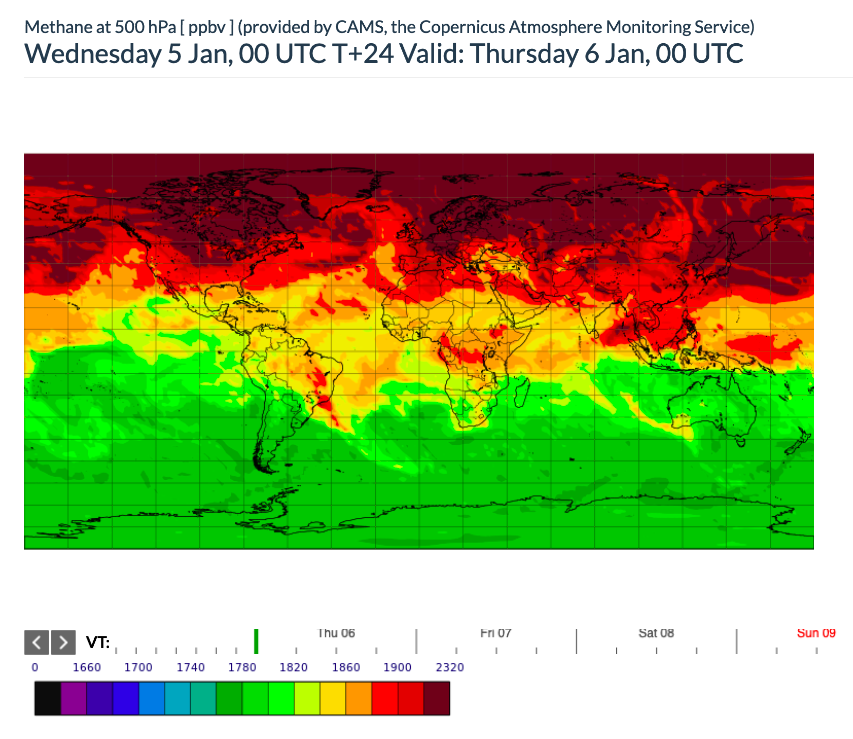
(c) COPERNICUS
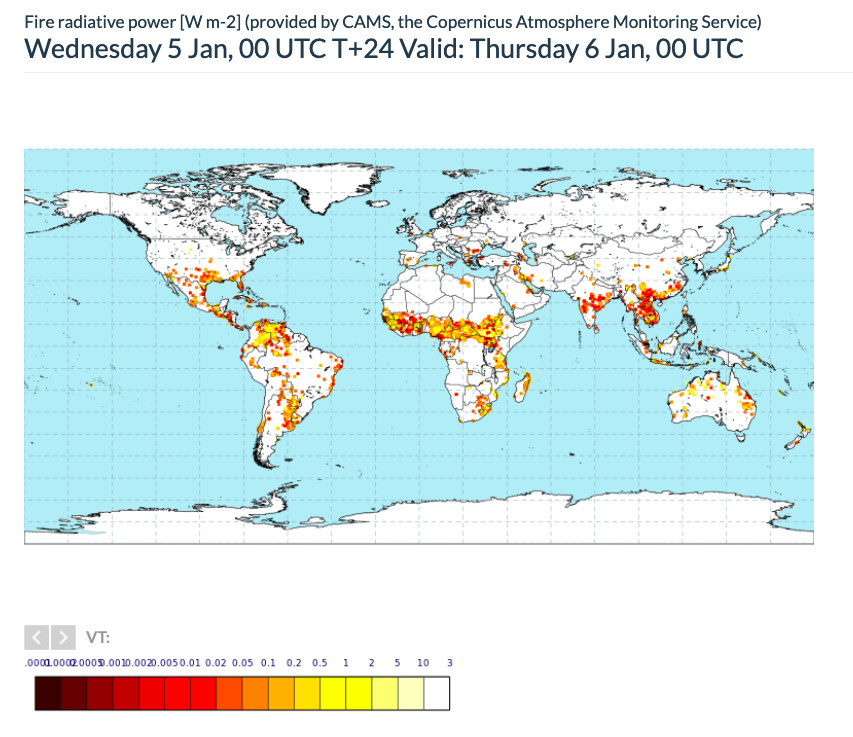
New COPERNICUS[6] data show that the entire Arctic has become a potent source of methane, increasing global GHG concentrations. The January 2022 forecast mapping, recorded at about 5500 m above sea level, clearly shows the strongly elevated levels, against a background of global concentration levels that are also already three times higher than they should be as a stable value. At the moment, Northern European, Russian and Canadian methane sources dominate on land. But, and very worryingly, a significant methane haze is also seen over the Arctic Ocean itself. According to studies published by a Swedish-Russion team, this may mean that CH4 is leaking from deep sources in this region – as early as early 2021. A visual bubble column phenomenon in the Laptev Sea was reported in late 2020. [7]
These discoveries reinforce two decades of both empirical and theoretical work that postulated the presence of many gigatons of methane stocks. If the release of these stocks were to happen, Earth’s temperature could rise abruptly by several degrees. But even without this boost, the Earth’s atmosphere has unsustainably high sources of methane, both from fossil energy use and from increased microbial activity. Governments must therefore immediately cut back natural gas use and initiate stabilization measures such as those proposed in the recent EUROSOLAR call for action („Regenerative Decade“).
Visualized on the same day by COPERNICUS are January forest fire forecasts worldwide, Besides the devastating fires in Colorado and much larger conflagrations in Southeast Asia, the many fires in the great green belt south of the Sahara stand out here, just where it is still green in Africa. This is again a massive tipping point and feedback factor, spurring entirely new efforts.
2 Nuclear is the wrong way, not the way out
The astronomical costs, unresolved waste management and constant accident hazards posed by nuclear reactors are well known and easily understandable. Nevertheless, nations with nuclear forces in particular accept these risks in order to have a stock of human and fissile resources for these purposes.
Another long known and suppressed fact is that the shutdown and secure deconstruction of the reactors in this age of global heating belongs to urgent future preservation, to pre-emptive disaster management. The rapidly heating northern hemisphere is home to over 90% of the world’s nuclear reactors, all of which operate within a narrow temperature range: if it gets too hot, they fail – including high-voltage power lines, and electrical transmission systems in general.
Most reactors – whether uranium or coal – need cooling water from rivers and lakes: that runs out quickly if temperatures continue to rise. It is therefore an urgent task to decommission all nuclear reactors purely for population and civil protection reasons, and render them harmless as far as possible – otherwise we will be leaving behind a very radiant future indeed.
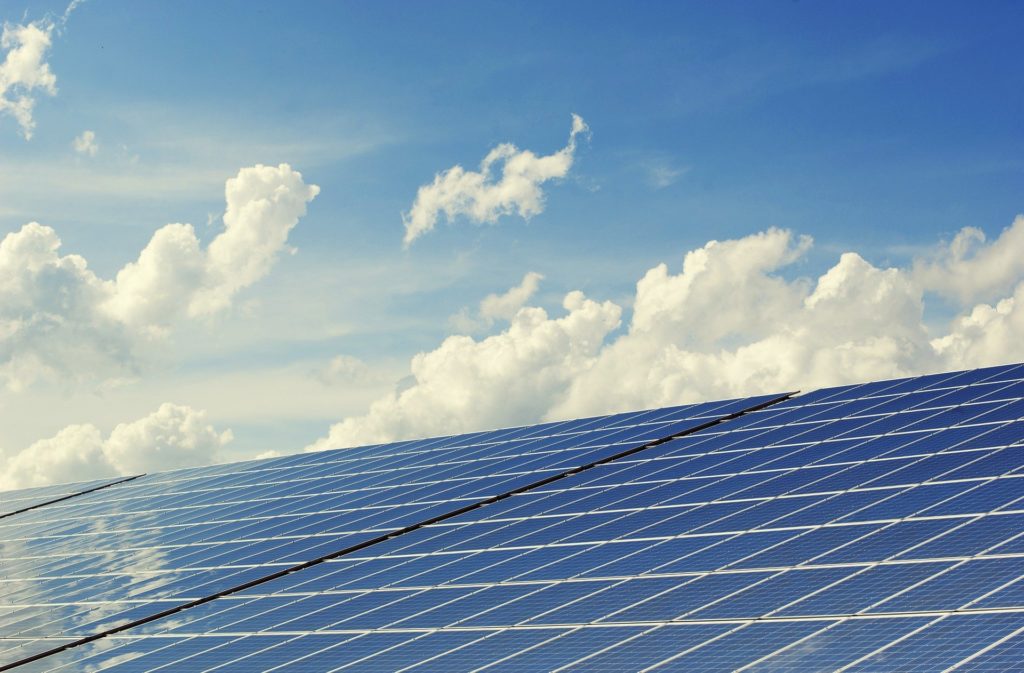
3 Regenerative action helps everyone
Renewable energies are generally non-toxic and free. Moreover, they provide resilient power and heat, and best are geographically distributed in redundant circuits and grids, and ideally always covering local consumption first. Now, on a planetary and European level, it is critical to gain time so that we as a species learn to extract not only CO2 but also CH4 from the atmosphere, and to stabilize the climate spiral.
This is where the real meaning of the European Community and diplomatic and trade relations worldwide emerges: helping one another to build the Regenerative Economy.
EUROSOLAR’s Regenerative Decade is future-oriented and calls for immediate action with ten essential policies (see www.earthdecade.org for more details) :
EUROSOLAR calls for a focus and strengthening of the European Green Deal, moving from mere climate neutrality to 100% renewables, carbon sequestering agriculture, reforestation with more drought resistant species and the rededication of the European circular economy directives into economy-wide carbon sequestration schemes.
The goal must be a climate-positive, emissions-negative Europe, based on a 100% renewable energy target by 2030 implemented in a short period, with practical, immediate implementation horizons. For this, there is no lack of available policy tools, such as a convincing energy feed-in law, renewable energy technologies and successful examples:
EUROSOLAR has been celebrating them for decades in the framework of its Solar Prizes and disseminating them in Solar City, Renewable Energy Storage and many other conferences.
Professor Peter Droege, President, EUROSOLAR e.V., European Association for Renewable Energy
Contributions from EUROSOLAR Board, European Delegates Assembly, Section Boards
[1] https://ec.europa.eu/info/business-economy-euro/banking-and-finance/sustainable-finance/eu-taxonomy-sustainable-activities_en
[2] from today 420 ppm to 280 ppm CO2
[3] www.earthdecade.org
[4] https://doi.org/10.1073/pnas.2019672118
[5] https://www.science.org/doi/10.1126/science.aat1327
[6] Specifically CAMS – the Copernicus Atmospheric Monitoring Service. COPERNICUS is the satellite based earth monitoring system set up by the EC and ESA in 1998.
[7] https://www.eurosolar.org/en/2020/11/09/call-for-donations-memberships-and-cooperation-for-eurosolar-2/
